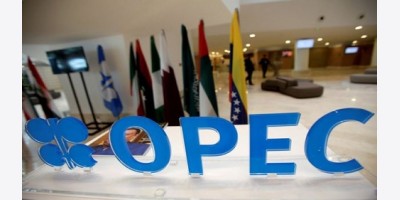Vietnam has revised up its crude oil output target for 2015 amid concerns that a production shortfall will slash economic growth, but the potential to lift output may be limited given the country's aging oil fields and low global oil prices.
The country's oil ministry in early July said Vietnam will need to produce an extra 1 million mt of crude oil in 2015 -- raising the full-year target to 15.74 million mt (115.4 million barrels) from 14.74 million mt earlier -- to achieve its targeted annual economic growth rate of 6.2%.
If Vietnam can manage to produce the additional 1 million mt, output will be marginally higher than last year's production of 15.5 million mt.
"The national oil and gas group, PetroVietnam, will produce an additional 1 million mt of crude oil this year, higher than a previous production plan set earlier this year, to serve the macroeconomic target," the ministry said in a statement.
The Platts Global Energy Awards is a competitive awards program honoring excellence and accomplishments in the global energy industry.
The 17th annual awards will be presented at a black-tie gala, attracting energy industry leaders from around the world on Wednesday, December 9th, 2015 at Cipriani's in New York.
Don't miss this opportunity to gain recognition for your company's achievements amongst the best of the best in the energy industry.
Vietnam produced 8.38 million mt of crude oil over the first half of 2015, 11% higher than during the same period last year.
But as the global price of crude oil was relatively low over January-June, the revenue contributed by crude sales to the national budget was lower, PetroVietnam's deputy director Do Chi Thanh said in the statement.
Adjusting the crude oil production target will help to make up for the shortfall in revenue and help the country achieve the annual economic growth target, Industry and Trade Minister Vu Huy Hoang said.
But analysts questioned Vietnam's move to squeeze more oil out at a time when prices are weak.
"It does not make sense for Vietnam to produce more oil from their oil fields in the current environment," said Gordon Kwan, head of regional oil and gas search at Nomura.
"Vietnam is a high-cost producer. Unless their contractors quote them competitive prices, which will be quite challenging, it won't work," he said, adding that Vietnam's breakeven price for crude production was currently about $55/barrel.
NYMEX August crude is currently trading around $52/b and August ICE Brent around $58/b.
Prices have been under pressure from the prospect of additional supply entering global markets.
OUTPUT DECLINING ON AGING FIELDS
Vietnam's crude oil production has been on the decline over the past decade due to its aging oil fields, falling from 20 million mt in 2004 to around 15.5 million mt in 2014.
"Production in the next 2-3 years will continue to fall," said an official at PetroVietnam's oil unit, PV Oil.
"It is because output from most of the country's fields is forecast to be on the decline."
She said it was unlikely the country would strike major oil discoveries like the Bach Ho and Rong fields any time soon. Most of its finds so far have been small.
PetroVietnam earlier this year said a slowdown in production from the major fields in 2014 and a sharp decline in oil prices since last year would impact its operations and field development activities in 2015.
Vietsovpetro, a 51:49 joint venture between PetroVietnam and Russia's Zarubezhneft, expects to produce an average 4.69 million mt/year over 2015-2019, well below the average 5.71 million mt/year it pumped over 2010-2014, Vietsovpetro said in a statement last month.
The JV pumped 210 million mt of crude oil from the Bach Ho and Rong fields in Block 09.1 offshore southern Vietnam over September 1988-May 2014.
Separately, PetroVietnam's upstream unit, PVEP, said earlier this month it would try to meet its full-year target for oil and gas production despite being impacted by low global oil prices.
PVEP in January said many of its oil discoveries in recent years were small with high production costs.
Many of its current fields are aging or have limited reserves.
It has faced a lot of challenges in boosting reserves as its exploration activity in the South China Sea has not been smooth due to a diplomatic row with China.
But the expected fall in output is not likely to have much impact on Vietnam's crude oil demand in coming years, according to a senior petroleum expert at the Vietnam Petroleum Institute.
Currently Vietnam is supplying part of its domestic crude oil production to the 130,000 b/d refinery at Dung Quat and exporting the rest.
The Dung Quat refinery is designed to process crude mainly from the aging Bach Ho field.
--Dao Dang Toan, newsdesk@platts.com
--Sambit Mohanty, sambit.mohanty@platts.com
--Edited by Wendy Wells, wendy.wells@platts.com
platts.com























